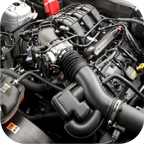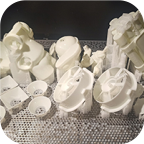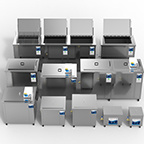The Ultimate Guide to Using Ultrasound Cleaning Machines for Machine Parts
Browse Volume:33 Classify:Support

Cleaning machine parts efficiently is a critical task in industries ranging from automotive to aerospace. Traditional cleaning methods often fall short when dealing with intricate components, tight crevices, or stubborn contaminants. This is where **ultrasound cleaning machines** come into play. Utilizing high-frequency sound waves, these devices provide a thorough, non-abrasive cleaning solution that ensures precision and longevity for mechanical parts.
Unlike manual scrubbing or chemical baths, ultrasonic cleaning reaches areas that other methods cannot, making it indispensable for maintaining high-performance machinery. This guide explores how ultrasound cleaning works, its benefits, key applications, and best practices for optimal results.
How Ultrasound Cleaning Machines Work
Ultrasound cleaning machines operate on the principle of **cavitation**. High-frequency sound waves (typically between 20 kHz and 400 kHz) are transmitted through a liquid cleaning solution, creating millions of microscopic bubbles. These bubbles rapidly form and collapse, generating intense scrubbing action that dislodges dirt, grease, oil, and other contaminants from machine parts.
The process involves three key stages:
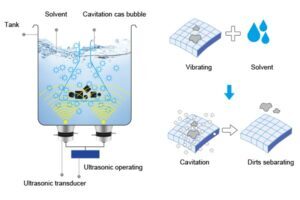
1. Emulsification – The ultrasonic waves break down oils and greases into smaller particles.
2. Dislodging – Cavitation bubbles penetrate tiny gaps and remove debris.
3. Rinsing – The loosened contaminants are washed away, leaving parts spotless.
This method is highly effective for cleaning complex geometries, such as gears, bearings, and hydraulic components, without causing surface damage.
Key Benefits of Ultrasonic Cleaning for Machine Parts
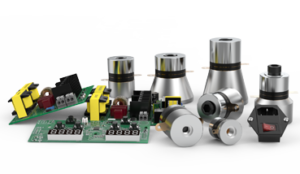
1. Superior Cleaning Precision
Ultrasonic waves reach every nook and cranny, ensuring even the most intricate parts are thoroughly cleaned. This is particularly beneficial for components with internal channels or fine details.
2. Non-Destructive Cleaning
Unlike abrasive techniques, ultrasonic cleaning does not scratch or wear down surfaces, preserving the integrity of precision-engineered parts.
3. Time and Cost Efficiency
Automated ultrasonic cleaning reduces labor costs and speeds up the process compared to manual methods. A single cycle can clean multiple parts simultaneously, improving productivity.

4. Environmentally Friendly
Many ultrasonic cleaners use biodegradable detergents and require less water than traditional methods, making them a sustainable choice.
5. Versatility Across Industries
From automotive engines to medical instruments, ultrasonic cleaning is adaptable to various materials, including metals, plastics, and ceramics.
Common Applications in Industrial Maintenance
Automotive Industry
Ultrasonic cleaners are widely used for degreasing engine parts, fuel injectors, and transmission components. They ensure optimal performance by removing carbon deposits and sludge buildup.
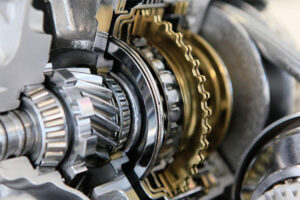
Aerospace and Manufacturing
Critical aircraft components, such as turbine blades and landing gear mechanisms, require meticulous cleaning to prevent failure. Ultrasonic technology ensures contaminants are eliminated without compromising structural integrity.Cutting tools, molds, and dies accumulate residues that affect precision. Ultrasonic cleaning restores them to like-new condition, extending their lifespan.
Medical and Dental Equipment
Surgical instruments and dental tools must be sterilized thoroughly. Ultrasonic cleaners not only remove biological residues but also enhance disinfection processes.
Electronics and PCB Cleaning
Delicate electronic parts, such as circuit boards, benefit from ultrasonic cleaning as it removes flux residues without damaging sensitive components.
Choosing the Right Ultrasonic Cleaning Machine
When selecting an ultrasonic cleaner for machine parts, consider the following factors:
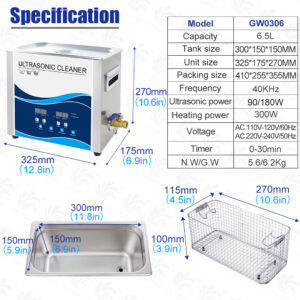
1. Tank Size and Capacity
Ensure the machine can accommodate the largest parts you need to clean. Industrial models offer larger tanks for batch processing.
2. Frequency Range– Low frequency (20-40 kHz) – Best for heavy-duty cleaning of large, robust parts.
– High frequency (80-400 kHz) – Ideal for delicate components requiring gentle yet thorough cleaning.
3. Cleaning Solution Compatibility
Different contaminants require specific detergents. Choose a machine that supports the appropriate cleaning agents for your application.
4. Heating FunctionSome ultrasonic cleaners include heating elements to enhance cleaning efficiency, particularly for grease and oil removal.
5. Durability and Build Quality
Industrial-grade stainless steel tanks and robust transducers ensure long-term reliability in demanding environments.
Best Practices for Optimal Ultrasonic Cleaning Results
To maximize the effectiveness of your ultrasonic cleaning machine, follow these guidelines:
1. Pre-Cleaning – Remove large debris manually to prevent overloading the cleaner.
2. Proper Solution Selection – Use a detergent suited for the contaminants and material type.
3. Optimal Temperature – Heating the solution (typically 50-65°C) improves cleaning efficiency for oily residues.
4. Correct Timing – Over-cleaning can cause part fatigue; follow manufacturer recommendations.
5. Regular Maintenance – Clean the tank and replace the solution periodically to avoid cross-contamination.
By adhering to these practices, businesses can ensure consistent, high-quality cleaning results while prolonging equipment life.
Future Trends in Ultrasonic Cleaning Technology
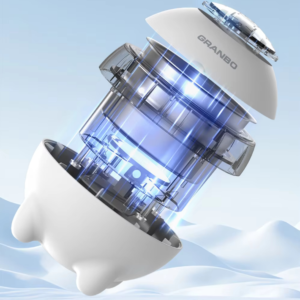
Advancements in ultrasonic cleaning are making the process even more efficient and eco-friendly. Innovations such as multi-frequency systems, automated robotic handling, and AI-driven cleaning optimization are transforming industrial maintenance. Additionally, the shift toward green chemistry—using biodegradable and non-toxic cleaning agents—aligns with global sustainability goals.
As industries demand higher precision and faster turnaround times, ultrasonic cleaning will remain a cornerstone of machine part maintenance.
References
1. Neppiras, E. A. (1980). “Acoustic Cavitation: An Introduction.” Ultrasonics, 18(5), 201-209.
2. Mason, T. J., & Lorimer, J. P. (2002). “Applied Sonochemistry: Uses of Power Ultrasound in Chemistry and Processing.” Wiley-VCH.
3. ASM International. (2018). “Handbook of Cleaning for Manufacturing and Maintenance.” Materials Park, OH.
4. FDA Guidelines on Medical Device Cleaning (2021). “Sterilization and Disinfection of Surgical Instruments.”
By leveraging ultrasonic cleaning technology, industries can achieve unparalleled cleanliness, efficiency, and cost savings in machine part maintenance. Whether for automotive, aerospace, or medical applications, this method continues to set the standard for industrial cleaning excellence.
 GranboSonic
GranboSonic





